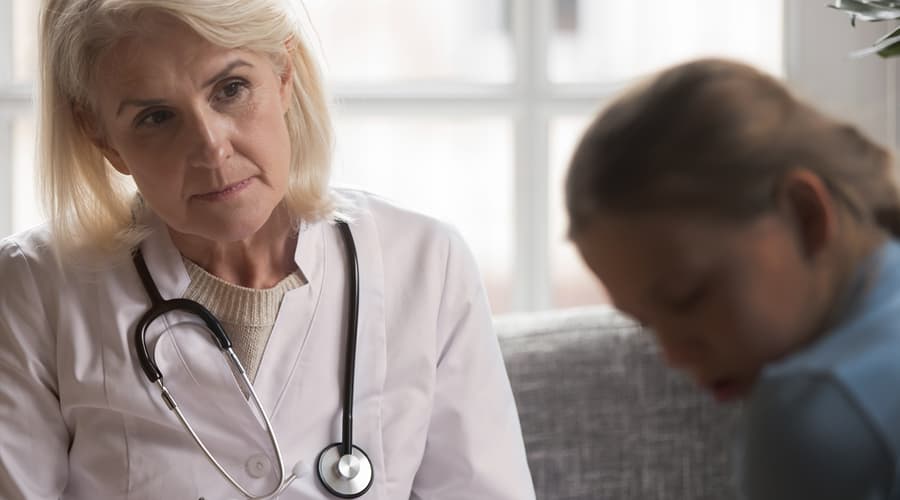Human trafficking is a fast-growing, ubiquitous crime. Annually, experts from the Department of State estimate that 24.9 million people are trafficked across the globe. Of these 24.9 million, about 10,000 are rescued each year. Recently, TeamHealth hosted a continuing education webinar on how to recognize and intervene in human trafficking.
What is Human Trafficking?
The Department of State defines human trafficking as “[compelling] victims to engage in commercial sex and to work in both legal and illicit industries and sectors.” Human trafficking can look vastly different depending on the situation. There is no unanimous “trafficking story.” The $150 billion industry is present in all communities and zip codes.
While any person can be illegally trafficked, some people are more vulnerable to trafficking, including:
- Immigrants or migrant laborers
- Individuals from marginalized communities, particularly girls and women
- Children and youth who are homeless or runaways
- Non-English speaking people
- Individuals with substance use issues
- Individuals with mental health disorders
Is Human Trafficking a Healthcare Issue?
Human trafficking is not only a crime, it is a human rights abuse. It is also a prominent healthcare issue. According to the Polaris Project, almost 88% of human trafficking victims were seen by a clinician or attempted to access healthcare services while trafficked.
Medical professionals may come into contact with people who are trafficked in a variety of healthcare settings. However, most points of contact occur in emergency departments. Because of this, clinicians must be aware of trafficking, be able to recognize signs and have the resources to intervene.
Human Trafficking Recognition
Recognizing human trafficking is not always easy. Some cases are more detectable. Others are much more subtle and require attention and patience. Here are some tips to help healthcare professionals recognize trafficking.
Understand the lived experiences of survivors
To identify human trafficking, clinicians must understand the many forms it can take. One of the best sources of information is the accounts of survivors who have shared their stories. Compassion and empathy are key aspects of any potential human trafficking scenario. Clinicians must allow patients to recognize them as professionals who want to help and make them feel safe.
Ask questions and make it a priority
Taking the time to ask questions and listen to patients is crucial. Some victims, particularly children, may be unable to answer seemingly simple questions. These can include, “where do you go to school” or “what street do you live on?” Just as clinicians would search for signs of domestic violence, it must be a priority to search for signs of trafficking.
Adjust language and perception
It’s important to understand that not all patients will resonate with the word “trafficked.” Clinicians should meet patients where they are – ask how they eat, how they survive. Moreover, any preconceived notion of what a “victim” looks like should be cast aside. Because trafficking is so varied, it takes time, energy and awareness to identify.
Identify physical signs and red flags
Not all cases of trafficking present the same way. In some cases, a patient may have recurrent sexually transmitted diseases or physical injuries. In the case of Dr. Schramski’s team, the patient had multiple human bite marks. Yet, not all patients may present with trafficking-related symptoms.
Identify environmental signs
Clinicians must also consider environmental red flags. This is particularly true for patients without physical signs. Patients may have an authority figure with them who does not allow them to speak or they may be on their phones much of the time, for example.
Human Trafficking Rescue
Intervening in human trafficking cases requires a robust list of resources easily accessible to staff. Once staff recognize a victim and ensure they are safe, they should begin identifying ways to connect them with resources. Here is a brief list that should be the foundation of any response protocol:
- Hospital or facility social worker
- National Polaris Project
- Local, state and regional taskforces
- Area non-profits for shelter, food, mental health services and more
Not all people being trafficked will respond to attempts at rescue. Adults have the right to leave or refuse resources. In these cases, clinical staff should let it be known that their medical setting is a safe place that the person can return to when they are ready. However, every state has a mandatory reporting law for minors. Staff must notify law enforcement of illegal human trafficking of minors when discovered.
If you or someone you know is a victim of trafficking, reach the Human Trafficking Hotline, a 24/7 confidential resource, by calling 1-888-373-7888 (TTY: 711) or by texting 233733. The Polaris Project has vast resources and information.
